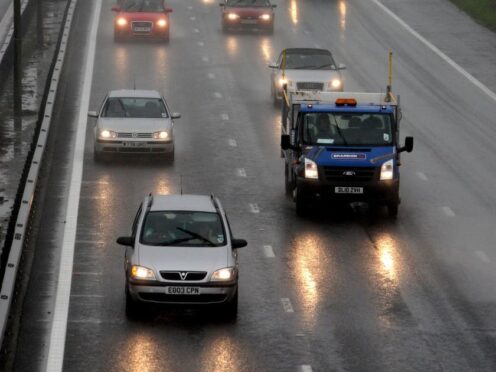Travel dropped between 2019 and 2022 due to a surge in working from home, statistics show.
Data from the Scottish Household Survey on journeys and travel methods was used in Transport Scotland’s Transport and Travel in Scotland report, comparing pre-pandemic with post-pandemic habits.
The survey found that in 2022, 61% of people had travelled the day before their survey interview – the lowest figure recorded since the current version of the survey was introduced in 2012.
The average number of journeys made the day before the survey interview dropped from 1.9 in 2019, when the figure was 74%, to 1.5 in 2022.
However when people did travel, the survey found the journeys made were similar to previous years and were predominantly for shopping or commuting.
Electric car use also increased in 2022 compared to prior to the pandemic, the results show.
The report said the versions of the survey from 2020 and 2021 were not comparable with other years due to methodological changes necessitated by the pandemic.
The survey found the share of journeys made by each transport mode in 2022 was broadly similar to 2019, with 55% by driving a car or van, up slightly from 53% in 2019.
Walking was the next most popular mode of transport in 2022 at 23% of journeys, followed by 11% as car passenger, 6% by bus, 2% by cycling, and 2% by rail.
Shopping was the most frequent reason for travel in 2022, involving 23% of journeys, followed by commuting at 21%.
Some 31% of employed people reported they worked from home in 2022, compared to 16% in 2019.
We've published survey results on Transport and Travel in Scotland, which show:
🔹 A reduction in travel in 2022 compared to 2019🔹 Changes in levels of homeworking and commuting habits🔹 More respondents now own #ElectricVehicles
Find out more ➡️ https://t.co/Z4j8ra0mvb pic.twitter.com/QpVWO1EqVi
— Transport Scotland (@transcotland) February 28, 2024
The proportion of people who commuted five days a week dropped from 62% in 2019 to 38% in 2022.
The survey also recorded a drop in satisfaction with public transport post-pandemic.
The proportion of all survey respondents stating they were very or fairly satisfied with public transport in 2022 was 58%, a 10 percentage point drop from 2019.
Satisfaction with public transport was higher amongst those who had used bus or train in the past month, with 67% of users reporting they were satisfied in 2022 – a drop in satisfaction from 76% in 2019.
Electric vehicle usage was found to have increased, with 4.1% of driving licence holders reported owning an electric vehicle in 2022, compared to 1.6% in 2019 and 0.3% in 2016.
Costs surrounding electric vehicles were increasingly cited as a reason for not considering buying one.
The proportion of respondents giving the cost of vehicle purchase as a reason not to consider buying increased from 36% in 2019 to 52% in 2022, and the proportion highlighting running costs as a reason not to buy increased from 7% to 13%.
